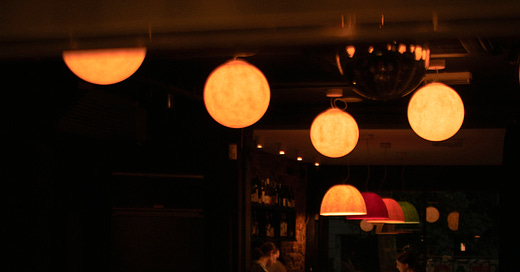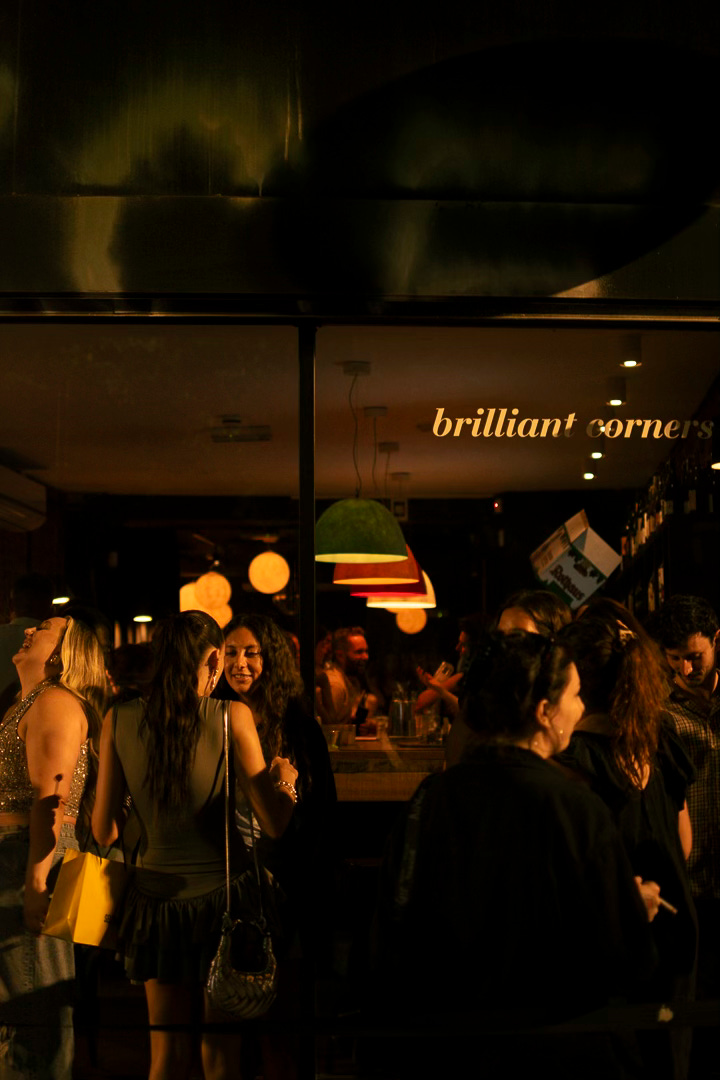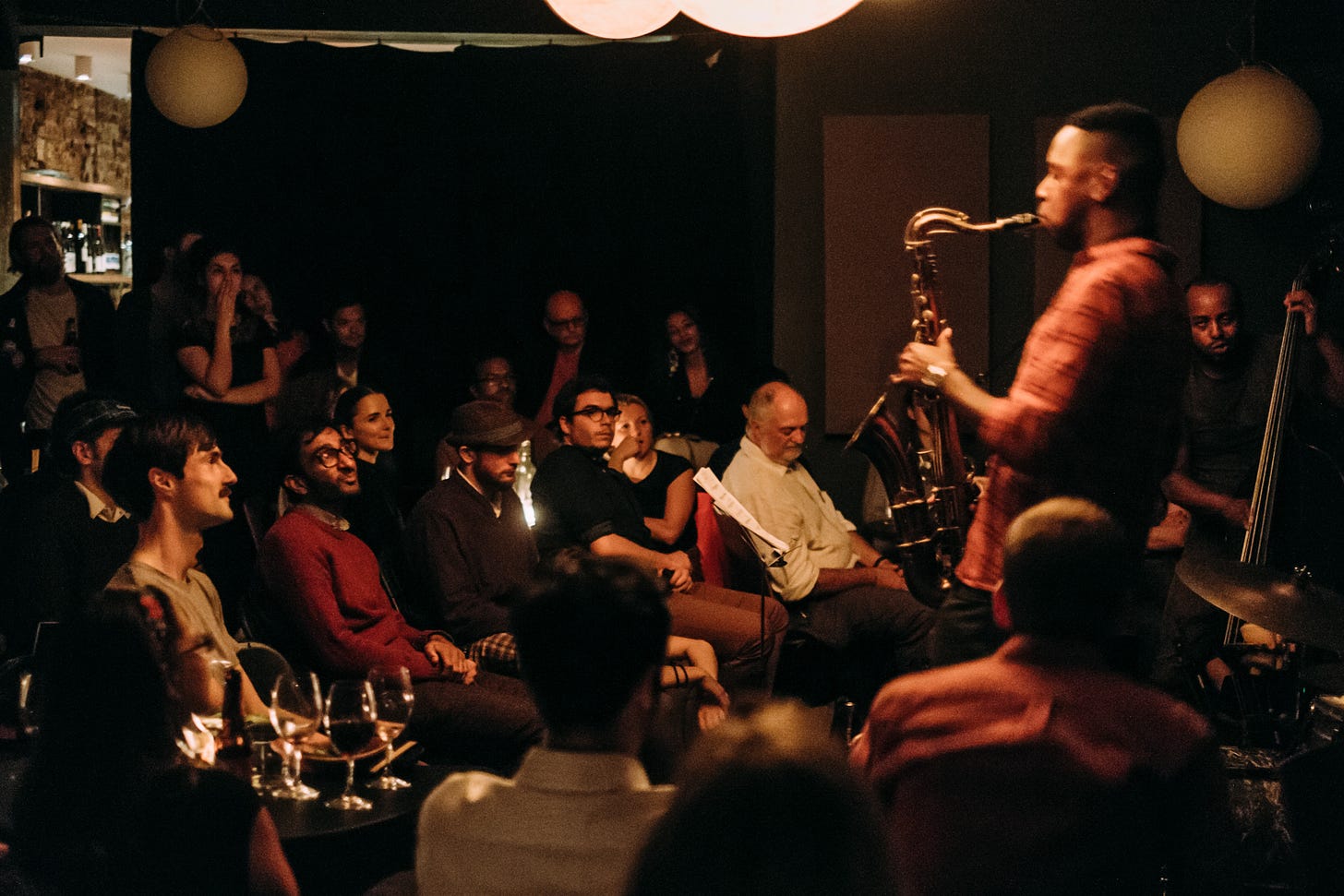The Shape of Sound at Brilliant Corners
Serendipity, systems, and the invisible shape of music. Interview with Amit & Aneesh Patel (Part 2).
In our last post, we heard from Amit and Aneesh Patel about the origins of Brilliant Corners and the community that’s formed around their family of venues. But no conversation about these spaces is complete without diving into the sound itself—the invisible architecture that underpins the atmosphere, shapes the energy of a night, and quietly commands attention without ever asking for it.
In this second part of the interview, we talk about what makes the Brilliant Corners sound system unique, how inspiration from places like The Loft and Beauty & The Beat led to their current sound system configuration. We also get into the role of serendipity and reflect on 12 years of adapting, improvising, and staying true to instinct.
Euan: Part of fostering a community around these spaces is having certain artists return regularly. I remember seeing Yohan Kebede play on Sundays quite often. When you invite an artist—whether a musician or a DJ—to be a resident at one of your spaces, what do you look for in them?
Amit: We don’t really use the term "resident" in any of our venues and never set out to create a roster of resident artists. But we do want Mu in particular to be a place where musicians feel at home and somewhere that they can rely on to play live as often as their schedule allows.
As for how we choose who plays there, we are mindful of the following: although we host one-off special seated concerts on Mondays and Tuesdays, during the rest of the week, Mu is not a traditional concert hall, the performances are not ticketed, we serve food, and welcome guests that come for different reasons, some for the cocktails, some for the food, some for the music, some for the whole experience. But the environment isn’t something we can strictly control, and we never really know who’s in the room and how the attentive they’ll be. So, it’s not about who we wish we could book—it’s about who is actually willing and able to play in this kind of venue, and who feels like they can get something from it without feeling like they’re missing the formality of a concert or a traditional gig atmosphere. It’s really about who’s game for the challenge presented by the particularities of the venue.
Aneesh: Wasn’t it Yohan who actually started playing piano at Brilliant Corners?
Amit: Yes that’s true. We met him during COVID, when we were tentatively reopening Brilliant Corners after one of the lockdowns.
It was late and I was about to head home but I bumped into Andrew Ashong on the street and we went back inside for a drink. He was with Yohan, who at the time I thought was just this quiet guy who happened to be hanging out with Andrew.
We were sitting around with the staff at the end of the night talking about music, in particular, certain types of music that we were listening to during lockdown, healing and atmospheric music like Ravel and Bill Evans, and all this talk must have resonated with Yohan because out of the blue he stopped the conversation and asked “Is that a piano?”.
And then he just started playing. And the whole room went silent and everyone was mesmerised.
So I immediately asked him, “Do you want to come back tomorrow night and do that again when we’re open?”.
And he did and the guests on that Sunday night were equally mesmerised. There is something timeless and essential about listening to a solo pianist, especially when they play like Yohan. The lone sound of the piano was the healing force we were all looking for at that time and we were simply fortunate to have met Yohan purely by chance. And that’s kind of how we end up working with people.
Euan: So, it's been a 12-year journey so far. Looking back, what were some unexpected challenges or learning experiences that shaped the way you run these spaces?
Aneesh: The further we get from the start, the more I look back and think, What were we doing? Compared to where we are now, things have developed so much.
At the beginning we literally started from scratch. We had a tin for collecting cash, no actual staff, just mates who agreed to help us out, borrowed equipment, nothing more than a bed sheet covering the wires over the DJ booth.
If someone had told me back then that this would still exist 12 years later, I’d have been genuinely shocked.
That said, I’m really glad we took the plunge even though there were so many ways it could have gone wrong. The biggest lesson learned is to trust your instincts but be adaptable along the way.
Euan: Over 12 years, you’ve seen a lot of change on Kingsland Road and in East London more broadly. Has that influenced how you run Brilliant Corners and Mu, or have you tried to stay immune to trends?
Amit: We pay no attention to trends. We just like what we like.
We don’t think about being one of the now many “listening bars”. To be honest I don't even know what a “listening bar” is.
Aneesh: A “listening bar” perhaps means someone bought a fancy sound system. No one’s “listening” like they do in a real jazz kissa in Japan. It’s often more of a marketing angle — people see hi-fi gear, a “listening bar” sign, and think, I like music, I’ll go there. But we’ve never called ourselves that.
Amit: People often credit us with our “concept” but there is no concept. Brilliant Corners was instead our response to a moment in time. Back then we were inspired by great wine and great sound and so to us there was nothing conceptual about enjoying these things at the same time. When we signed our lease, we hadn’t yet decided on the food offering. In the end, the choice we made was based on the good fortune of knowing Kay Suzuki, who we had met at Beauty & The Beat, and who we then discovered had experience making sushi in Japan. He subsequently become our first Head Chef. Our choice to offer Japanese food was also based on rational judgement: sushi and Japanese food in general is healthy, goes well with natural wine and is the kind of cuisine it’s easy to enjoy more than once a week. These are all elements we thought would serve our guests well and be compatible with an offering that presented music in a serious way.
Since then, we have developed our Japanese food offering year on year, and we are incredibly proud of the quality of the sushi that comes out of our kitchen. Our current goal is to make Brilliant Corners a new reference point in London for aspiring chefs who want to learn traditional Japanese techniques, cutting and preparing fish for sushi and sashimi and making perfectly seasoned and consistently excellent sushi rice for maki and nigiri.
Euan: What led you to choose the core components of the BC sound system—speakers, amps, and so on?
Aneesh: The Klipschorns were the foundation. We first experienced them at Beauty and the Beat and later at The Loft. Initially, I didn’t even know what they were—just saw them being packed up at the end of the night and got curious. Then I read about them, and how they are the longest continuously manufactured speaker design, nearly 80 years old.
Mancuso adapted them from home speakers to club use with minimal power, and the result was incredible—layers, textures, and that Loft effect where a familiar track suddenly sounds different. We didn’t know much about audio then, just that we needed to aspire to that kind of sound.
From there, we learned McIntosh amps pair well with Klipschorns, we explored different setups, read forums, tested everything ourselves. Over time, we tried various amps, mixers, tonearms, power conditioners—some changes made a difference, others didn’t.
At first, we had just one pair of Klipschorns and a pair of La Scalas. We modified the system over time, and while there's always the temptation to keep tweaking, at some point, tiny improvements aren’t worth the cost. We’re reasonably happy with where it is now, allowing us to focus on the rest of the operations.
Euan: Is there a record that truly represents BC for you?
Aneesh: That’s tough—I don’t have a single record that defines it. Certain tracks remind me of different eras of BC, just like others take me back to Beauty and the Beat, The Loft, or Plastic People. It’s more about moments—memorable nights, specific BC birthdays—rather than one defining record.
Amit: It might be Ornette Coleman’s The Shape of Jazz to Come. That was the first Played Twice record in 2014. In a packed room, we listened to a Pure Pleasure 45 RPM pressing, then Shabaka, Seb Rochford, Neil Charles, and Byron Wallen performed it live.
The music was otherworldly. Avant-garde and difficult in places but also primal and instantly engaging.
The forward looking title itself—The Shape of Jazz to Come— felt like it was suggesting that we were at the beginning of our journey.
We believe in the power of jazz music. We named this place Brilliant Corners for a reason.
Both those records sum it all up.
If you enjoyed reading this interview—head down to Kingsland Road and experience Brilliant Corners for yourself.
https://brilliantcornerslondon.co.uk
💡 Paid subscribers perk:
We’ve compiled a selection of Kay Suzuki’s recordings from his sets at Brilliant Corners - solo as well as sets alongside close friends like Pol Valls, Donna Leake, Frankie Valentine, Ryota Opp, and Ken Hidaka.
May’s discount code for Bandcamp is also just below 👇
Keep reading with a 7-day free trial
Subscribe to Time Capsule to keep reading this post and get 7 days of free access to the full post archives.










